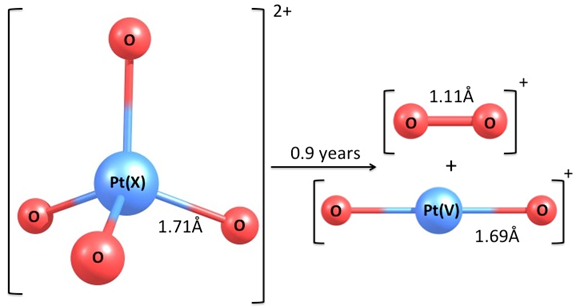
Formal oxidation state is one of the most widely used identifiers for understanding the mechanisms of oxidation-reduction reactions and catalysis. Metals in high oxidation states are known to have strong catalytic properties and oxidizing power, and therefore there is intense interest in preparing species with metals in high oxidation states. Furthermore, the study of variations in oxidation state contributes to our general understanding of the periodic trends across the periodic table and to our understanding of the feasibility of various redox reactions. The reaction mechanisms and products of reactions are often determined by the oxidation state of the reactants and the possible products. The quest for higher oxidation states of transition metals is central to much current research on catalysis as well as being of fundamental importance in chemistry. The question naturally arises then of what is the highest oxidation state that might be found in nature. Previously, the range of oxidation states was -4 to +9. Now graduate student Haoyu Yu and Regents Professor Donald Truhlar have a “Hot Paper,” published in Angewandte Chemie (DOI: 10.1002/anie.201604670) that reveals that oxidation state 10 exists. This work is featured in the C&EN news and Chemistry World.
To come to this conclusion, they examined the stability of various transition metal compounds with a metal formal oxidation state of 10 by using Kohn–Sham density functional theory, and PtO42+ was found to be stable. PtO42+ has a similar electron density but a larger partial atomic charge on the metal than one finds in IrO4+, which is the compound with the previously highest oxidation state. Note that PtO42+ and IrO4+ are isoelectronic with the commodity chemical OsO4.
Interestingly, the lowest oxidation state in nature was also determined in the Chemistry Department at the University of Minnesota, in particular by Professor John Ellis, who reported (J. Am. Chem. Soc. 1983, 105, 2296) the oxidation state of -4 for the super-reduced species Na4M(CO)4, where M can be Cr, Mo, or W in their lowest oxidation states of -4.
This work was supported as part of the Inorganometallic Catalyst Design Center, an Energy Frontier Research Center funded by the U.S. Department of Energy, Office of Science, Basic Energy Sciences under Award DE-SC0012702.